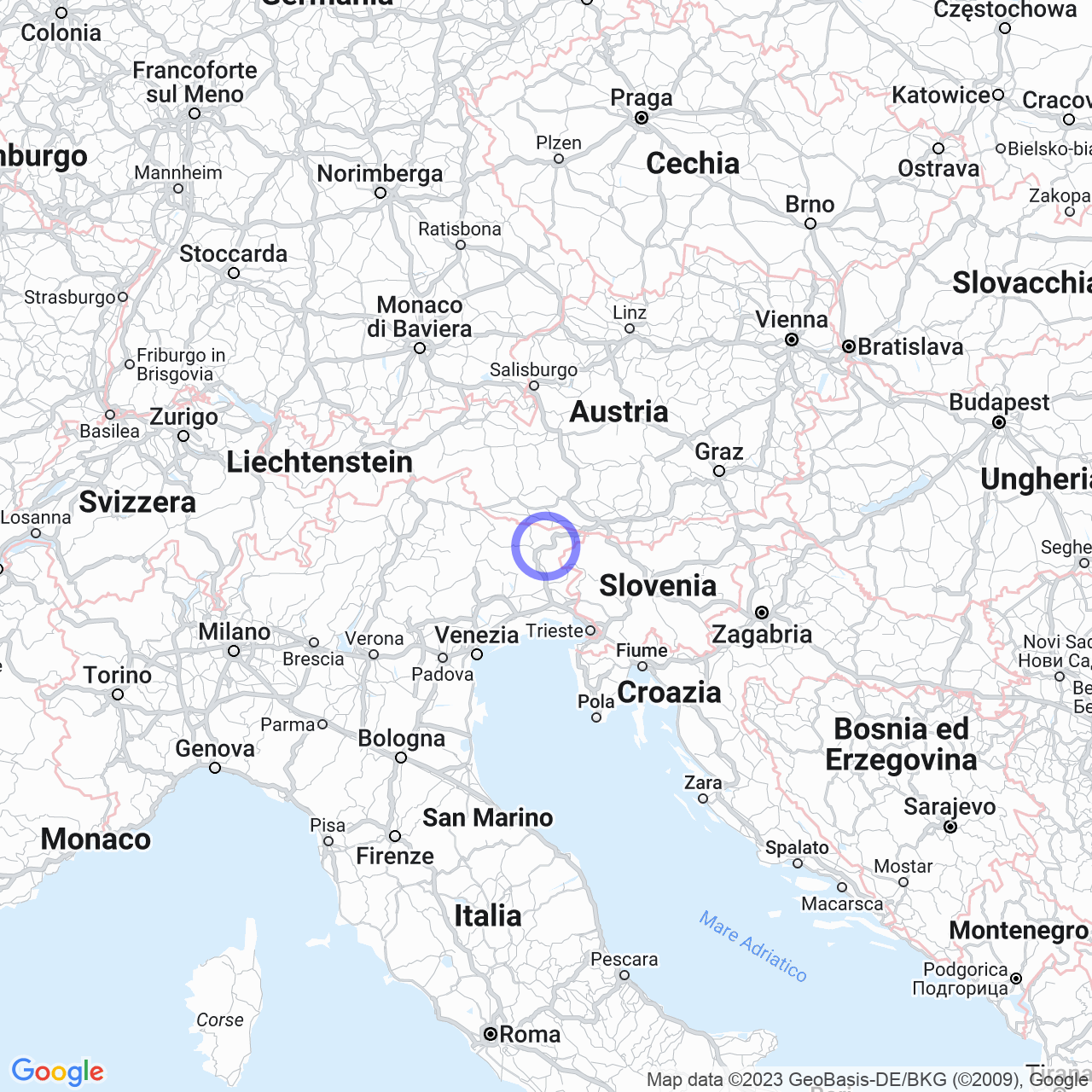Moggio Udinese
Welcome to Moggio Udinese
Hello friends! Today I take you on a journey to discover Moggio Udinese, a small town with just over 1600 inhabitants located in the heart of the Julian Alps, in Friuli-Venezia Giulia. Here, nature reigns supreme, where the high peaks of the surrounding mountains offer breathtaking landscapes. Are you ready to learn more?
Physical geography
Moggio Udinese is located at an altitude of 341 meters above sea level, in a strategic point where the Canal del Ferro meets the Valle d'Aupa. The town is divided into two main nuclei: Moggio di Sotto, located at an altitude of 341 meters and Moggio di Sopra, which is located at an altitude of 381 meters. The city is surrounded by the high mountains of the Julian Alps and the Carnic Alps, such as the Monte Plauris group and Mount Amariana to the south and west, while to the north there are Creta Grauzaria and Zuc dal Bôr. To the east is the Monte Canin group. Moggio Udinese is not only made up of the two main nuclei, but also has several hamlets such as Bevorchians, Dordolla, Monticello, and many more. Among these, Bevorchians is particularly interesting, located in the high Valle d'Aupa and consisting of about 15 hamlets, farmhouses, and scattered clusters at an altitude ranging from 630 to 970 meters. From here, numerous excursions amidst nature are possible.

History
Moggio Udinese has an ancient history dating back to the Roman era, as evidenced by archaeological and numismatic findings. Later, in the eleventh century, the castle of Moggio became the property of Count Cacellino, a nobleman from Carinthia, count palatine, and supreme master of the imperial court. According to legend, before leaving for the Holy Land in 1070 or 1072, Cacellino would have left his property to his cousin Federico, Patriarch of Aquileia, so that he could build a Benedictine monastery in place of the castle. Thus, on June 9, 1119, Patriarch Voldarico I consecrated the Abbey of San Gallo, named after the famous Swiss monastery of which he himself had been abbot. The abbey became an important cultural center and acquired extensive properties in Carinthia, Friuli, and Carnia. In addition, it obtained the supremacy over the fiefs of the parishes of Cavazzo Carnico, Dignano, Flaibano, Pieve di Gorto, Osoppo, Venzone, Feistritz an der Gail, Dignano (Croatia), and Portole d'Istria.
After the bull of Lucius III in 1185, the abbots of Moggio became subjects only to the Holy See. The abbey was also ransacked by Germanic soldiers of Emperor Conrad IV of Swabia. But despite the difficulties, the history and culture of the abbey continued to flourish. Ghiberto da Marano, contemporary and general vicar of Patriarch Bertrando di San Genesio, was abbot from 1329 to 1349. Several parishes depended on the abbot, over which he exercised his own jurisdiction through pievans, pastors, or chaplains, secular or regular, appointed by him. The administration was carried out through the camerarii, who were required to present themselves for the homage visit every year, on the solemnity of the consecration of the monastery or on that of the patron saint San Gallo (October 16).
Things to see in Moggio Udinese
Moggio Udinese is a small town but there are plenty of things to see and do. First and foremost, a visit to the Abbey of San Gallo is a must. This historic monument is located at an altitude of about 630 meters and is one of the few ancient Benedictine monasteries remaining in Friuli. Inside, you will also find the church dedicated to the saint, characterized by the Venetian Gothic style and the presence of a splendid rose window. The church contains numerous artistic treasures, such as the statue of the Madonna with Child, the Chapel of St. Joseph, and the main altar. If you are a fan of naturalistic hiking, you can visit the Selva di Pradis Nature Reserve, a forest of centuries-old beech trees of rare beauty. Here you can come across numerous trails and paths that can be walked or biked. If you prefer to relax, you can enjoy a walk along the Canal del Ferro, an artificial canal built to transport minerals that connects the Adriatic Sea with the Po Valley.
The cuisine of Moggio Udinese
Finally, we cannot forget to talk about the wonderful local cuisine. In particular, Moggio Udinese is famous for its mushroom dishes, which can be found in many typical taverns and restaurants in the area. Moggio mushrooms are among the most delicious in Friuli-Venezia Giulia, including porcini and prugnoli. But it's not just mushrooms: the local cuisine also offers a wide selection of cured meats, cheeses, meats, and especially typical dishes such as frico, made with potatoes and cheese. Don't miss the traditional desserts either, such as gubana, strucolo de pomi, and presnitz, a dessert made with walnuts, figs, and raisins.
So, friends, this is all you need to know about Moggio Udinese. This town will win you over with its unspoiled nature, its charming history, and its delightful cuisine. We are waiting for you to visit and discover its beauties!
